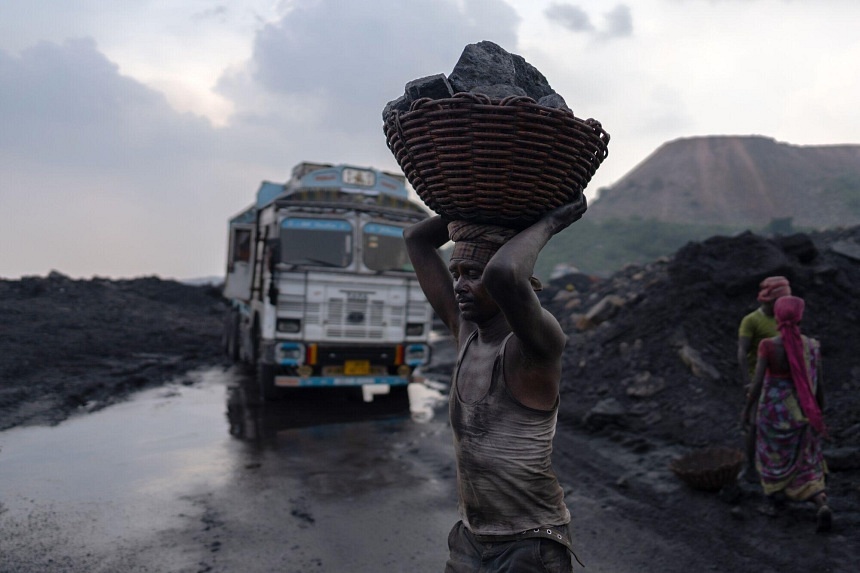SINGAPORE – Emissions of methane, a potent greenhouse gas, have accelerated since 2020 and reached a record in 2023, a global analysis has found.
The emissions are driven largely by mankind’s unrelenting demand for energy and food, including rice and beef.
Total annual methane emissions from human activities increased by 20 per cent, or 61 million tonnes per year, from 2000 to 2020, and have continued to increase since then.
Methane’s accumulation in the atmosphere has also accelerated in the past decade.
This is according to the Global Methane Budget, published on Sept 10 in the journals of Earth System Science Data and Environmental Research Letters.
Methane is responsible for around 30 per cent of the current rise in global temperatures.
Think of methane emissions as giving climate change an extra kick, with 2023 the hottest year on record and 2024 continuing the pattern as another record-breaker for extreme weather.
Methane is 80 times more potent in trapping heat in the atmosphere than carbon dioxide (CO2), the main greenhouse gas, over the first two decades after its release.
Methane concentrations in the atmosphere are now at the highest level in at least 800,000 years, said the researchers behind the latest report, who are from the Global Carbon Project, an international scientific consortium that conducted the analysis over several years. Its previous methane assessment was in 2020.
Concentrations have kept rising, according to measurements by the US National Oceanic and Atmospheric Administration, reaching 1,931.87 parts per billion (ppb) in the atmosphere in December 2023, compared with 1,891.78 ppb in December 2020 and 1,775.39 ppb in December 2000.
Since the Industrial Revolution, methane levels in the atmosphere have increased by a factor of 2.6.
The research studied the growth of the gas from 2000 from many different sources, man-made and natural.
Major sources of methane are from agriculture, such as the digestive tracts of cows and sheep, and the extraction and use of fossil fuels.
Methane emissions come from natural sources such as wetlands, tropical soils and rice paddies, where it is produced by bacteria breaking down organic matter.
It also comes from landfills, natural gas extraction and processing, and coal mines.
The top five emitters by volume are China at 16 per cent, India at 9 per cent, the United States at 7 per cent, Brazil at 6 per cent and Russia at 5 per cent, with the fastest-growing regions in China, South Asia, South-east Asia, and the Middle East, the analysis found.
Human activities are responsible for about 65 per cent of all methane emissions.
“Global methane emissions from human activities continue to grow despite the Global Methane Pledge to cut emissions by 30 per cent by 2030,” said Dr Pep Canadell, executive director of the Global Carbon Project. He was referring to a 2021 pledge backed by 158 nations, including Singapore.
“The fastest-growing emissions come from fossil fuels and landfills, with emissions from fossil fuels now comparable in size to emissions from livestock,” he told The Straits Times.
The boom in cattle farming in recent decades, especially in South America, has helped drive up methane emissions, and so has the jump in production and use of gas, including liquefied natural gas (LNG). Pipeline leaks are a major source of methane, which is the main component of natural gas.
“LNG is responsible for a growing fraction of methane emissions from human activities, but it is still smaller than methane emissions from coal mining, the single largest source in the fossil fuel industry,” Dr Canadell said.
Just as worrying is that global warming is causing bacteria in tropical soils and wetlands to produce more methane.
“Wetlands and water-saturated soils, particularly those in the tropics, are very sensitive to changes in climate and responsible to a large degree for the most recent acceleration in the accumulation of methane in the atmosphere,” Dr Canadell said.
“It is because it has been so hot in recent years that we are causing wetlands around the world to produce more methane emissions in a feedback loop,” he said.
Bacteria responsible for producing methane work more efficiently at higher temperatures.
But there is some good news.
Because methane has a much shorter lifespan in the atmosphere than CO2 – which can persist for hundreds of years – steps taken to cut its production now can have a pretty quick impact on global warming.
“The biggest and easiest opportunities are in the fossil fuel sector, particularly in the natural gas industry, where it is estimated that 40 per cent of the emissions can be eliminated at no net cost to the industry,” said Dr Canadell.
“Agriculture also has good opportunities to reduce emissions but not to eliminate them completely,” he added.
For example, there are ways to grow rice that use less water – this cuts methane emissions.
Supplements fed to cows can also reduce the amount of methane they burp out.
Some other steps include capturing methane from landfills and using the gas for power generation, preventing the dumping of organic waste in landfills, treatment of livestock manure in a biogas digester, cutting food waste and loss, and adoption of healthier diets to curb meat consumption.
For now, the trend is not looking good.
“At a point where carbon dioxide emissions are beginning to level off, methane emissions are increasing, the exact opposite of where we need to go,” Dr Canadell said.
The report also studied the “sinks”, where methane is destroyed naturally.
The main natural pathway to destroy methane is via chemical reactions in the atmosphere, where it breaks down into CO2 and water. Another natural sink is soil, where the gas is oxidised by bacteria.


